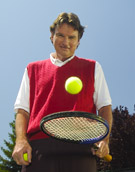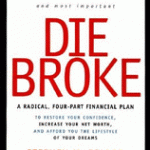When Michelle Obama does yoga as part of her recent President’s Council on Fitness initiative, you know yoga has gone mainstream. In the 15 years I’ve been a practitioner (including the last 12 as a Kripalu Yoga-certified instructor), I’ve seen yoga grow from the culture of the ashram, dependent on the guru-disciple relationship, to a billion dollar industry of conferences, workshops, star yogis, fashion clothing, DVDs, books and the like. Pick up a copy of Yoga Journal and the cover will likely feature a well-toned yogi in spandex performing one of the more difficult postures. I love YJ for the useful articles and professional advice I usually find there, but I wonder how many people get turned off by those daunting covers.
“I can’t do yoga; I’m too inflexible.” If I had a dime for everyone who says this when they discover what I do… The reality is, people who sit in chairs most of the time (and that’s nearly everyone in the West) are likely to be inflexible, and not just in the body. My Burmese grandmother grew up sitting on the floor, with her legs crossed yogi-style or hunkered down, with her arms wrapped around her knees. In her eighties, she had the body of a much younger person, was up with the dawn to meditate, and active all day long. She didn’t do frailty.
The sedentary lifestyle of our desk-bound, television-addicted population reinforces more of the same behaviors. So the very idea of getting down on a yoga mat starts to sound more and more impossible.  But yoga has been evolving in other ways that open up its tangible benefits to more of the population, particularly older people who want to maintain good health, preserve their independence, and forestall the so-called diseases of aging. It is no accident that some of the greatest yogi masters are robust well into their 80’s and beyond.
Last weekend, I became certified in Chair Yoga, a form that adapts many classic yoga postures to the seated position and makes the benefits of yoga available to a much larger population including older adults. Chair Yoga, as developed by Lakshmi Voelker who has devoted most of her life and career to yoga, delivers the benefits of yoga, including flexibility, strength, improved circulation, and mental focus, to anyone able to sit in a chair, including those in wheelchairs. In her three and a half day workshop at Discovery Yoga in St. Augustine, Florida, 23 eager students — yoga instructors, physical therapists, Reiki masters and others — learned seated variations of postures like Mountain (Tadasana), Half Moon (Ardha Chandrasana), Tree (Vrkshana) and the Warriors at varying levels of challenge.  We learned how to add 1- and 2-lb. weights to increase the fitness challenge. And we experimented with double chair and partner-assisted postures. We were encouraged to replace some or all of our personal practice with chair yoga to improve our skills as instructors. The biggest surprise was not how well these postures could be adapted for the chair, but how physically challenging they are, even for the young and fit.
Even if you have a yoga practice and/or other fitness routine, there are times when mat practice is not feasible. You can practice chair yoga at your desk at home or work, on the train/plane/bus or in a car (not while driving!) If you are recovering from an illness or injury, chair yoga can help you resume your normal fitness activities sooner. You can even do chair yoga while you’re watching television. Don’t just sit there!

